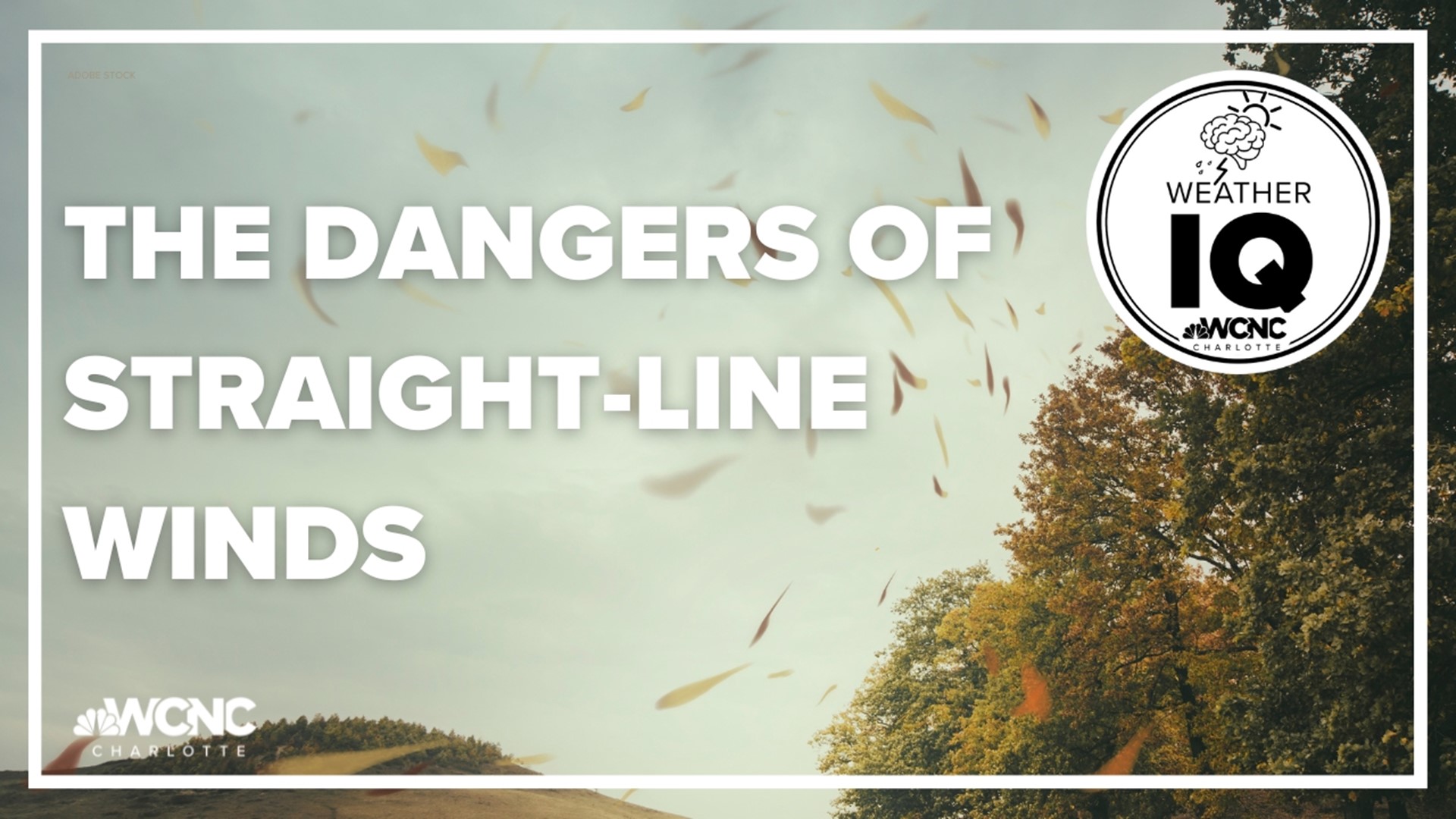CHARLOTTE, N.C. — Where there is a threat for severe weather in the Carolinas, there is a threat for straight-line winds.
And while wind doesn’t seem as scary as a tornado, there are more damage reports from straight-line winds than tornadoes during most calendar years.
Straight-line winds can topple trees onto cars, houses, and power lines. Many deaths from straight-line winds are the result of trees falling onto the person, whether they are outside, in their house, or driving in their car. Strong straight-line wind events can even destroy buildings, especially mobile homes, and manufactured homes.
What makes straight-line winds different than tornadoes is in the name. These winds within a thunderstorm don’t rotate. Unlike tornadoes, which pick things up and throw them around, these winds blow directly across a region.
After a severe weather event, if any damage is reported, the National Weather Service will go out and survey the area. If the debris is all pointed in the same direction, that is when you know the damage was caused by straight-line winds.
The wind hits objects at one angle and blows them over. Tornado damage is more scattered. If there are trees falling in all different directions, that’s when you know the damage is from a tornado.
When damaging straight-line winds or large hail is expected, the National Weather Service will issue a Severe Thunderstorm Warning. A severe storm must be capable of producing wind gusts of 58 mph or greater or hail that is one inch or greater in diameter.
When a severe thunderstorm warning is issued for your area, you should seek shelter immediately, just like the safety rules we apply for tornadoes.
Try to find an interior room on the lowest floor of your home, building, or shelter. Stay away from windows, get down low, and cover your head. Bonus points if you have easy access to a pillow or helmet. This adds additional safety. If you have a basement, that’s most likely the safest place in your home.
During a severe weather event, forecasters will also keep a close eye on cold pools developing above the surface. These can result in downbursts, a small-but-mighty phenomenon that can result in especially damaging winds.
Downbursts are the result of an area of rain-cooled air that sinks rapidly to the surface. This is caused by mid-to-upper-level air that is cooled significantly as rain evaporates. These “bursts” of air are forced to spread out when they hit the ground and speeds can reach 150 miles per hour. In the Carolinas, speeds have been clocked as high as 175 mph near Morehead City, North Carolina.
Strong downbursts can cause roaring noises and residents have often compared the sound to a freight train, which is usually associated with tornadoes. Although downbursts are not tornadoes, they can cause equivalent damage in some cases. They can destroy entire buildings and are incredibly hard to predict.
Downbursts are classified as either microbursts or macrobursts, depending on the extent of the damage. A microburst has a diameter of 2.5 miles or less while a macroburst is much larger. Microbursts are especially hazardous to aviation due to their small scale and short time span.
Straight-line winds, downbursts, or tornadoes: Mother Nature’s destruction can take only seconds, so stay safe and stay weather aware.
Contact Brittany Van Voorhees at bvanvoorhe@wcnc.com and follow her on Facebook, Twitter and Instagram.

